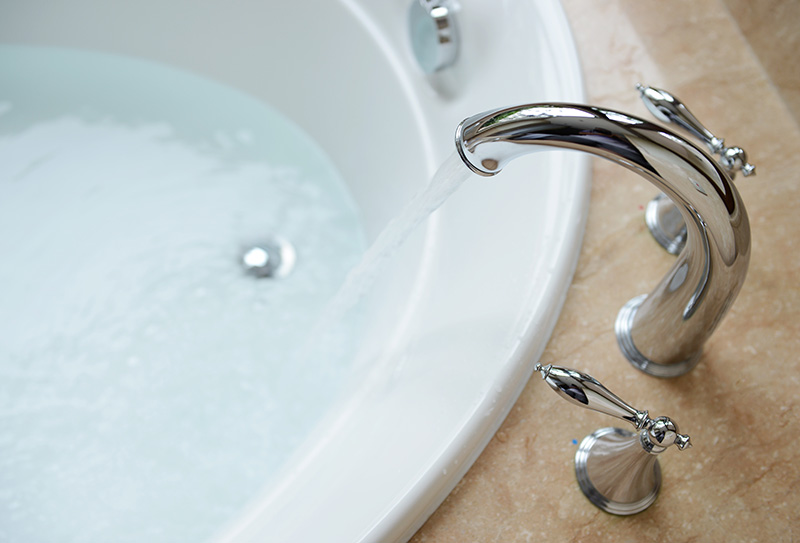[vc_row][vc_column][vc_column_text]
Preventing Hot Water Scalding in the Home

Did you know that hot water accounts for 20 percent of all burns in the U.S.? Every year more than 2,000 U.S. children are treated for scalding from exposure to hot water. Scalding also causes many secondary injuries from heart attacks, falls, and broken bones, particularly among the elderly. Most scalding accidents occur in the bathroom and kitchen.
Fortunately, the vast majority of hot water burns are avoidable. Here are the steps to take to prevent scalding in your home.
Bathtub Safety
Because infants, young children, and the elderly are especially vulnerable to scalding in the bath, it’s important to ensure that hot water is kept under control. First, ensure that the water heater temperature is set no higher than 120 Fahrenheit. Second, check to see if the plumbing in your bathrooms is equipped with an anti-scald device.
Even if you have the above safety measures in place, always check the water temperature with your hand before placing a child in the bathtub and never leave a child alone or with other young children in the bathtub.
Water Heater Temperature
Most water heaters come from the factory with the thermostat set higher than 120F. For many households, this is too high. The chart below shows the scalding risk and time it takes to cause a burn.
| Water Heater Thermostat Setting | Exposure Time | Effects of Exposure to Hot Water at High Temperatures |
| Water at 100 degF or below | – | Most water heaters are unlikely to scald an adult |
| Water at 120 degF | 5 minutes | 2nd & 3rd degree burns on adult skin |
| Water at 130 degF | 30 seconds | 2nd & 3rd degree burns on adult skin |
| Water at 140 degF | 5 seconds | 2nd & 3rd degree burns on adult skin |
| Water at 150 degF | 1.5 seconds | 2nd & 3rd degree burns on adult skin |
| Water at 160 degF | .5 second | 2nd & 3rd degree burns on adult skin |
Scald Protection Devices
Scald protection devices are essential in homes with young children, the elderly and physically disabled. In many places they are required by law to be installed to meet building code requirements. While caution is the first line of defense to prevent scalding, scald protection devices help prevent accidents by limiting the rise in water temperature should a child move the water controls.
Have questions about preventing hot water scalding in your home? Call Hickey Plumbing, Air & Electrical. Your family’s safety is our top priority.[/vc_column_text][/vc_column][/vc_row]
